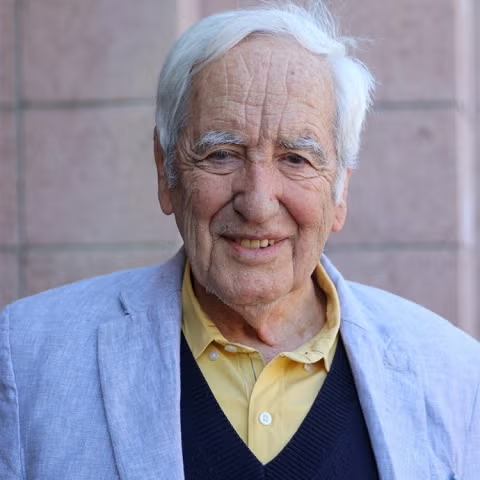

Since the 16th century, the Spanish language has been interwoven into the fabric of American history, shaping its literary and cultural landscapes. Yet much of this literary tradition remains underexplored. In Florilegio, Víctor Fuentes, a professor emeritus at UC Santa Barbara, brings together a collection of Spanish-language texts written within the US, spanning from the 16th to the mid-20th century.
The book’s title, meaning “flower picking,” reflects its purpose: to gather and showcase a literary tradition that has long flourished in the US, even if it has often been overlooked.
“This literature is part of the history of the United States, but it has been forgotten, erased,” said Fuentes, a historian of Spanish literature. “My intention is to bring part of that to the reader, to offer it.” The texts include diaries, essays, and poetry, accompanied by brief notes on the authors and an extensive bibliography—tools Fuentes hopes will inspire further scholarship.
More than an anthology, Florilegio presents a historical and cultural context for these works, offering what Fuentes described as “the seeds of a history of Spanish-language literature in the US, waiting to be written.” With its 375 pages, Florilegio de las letras en español en los Estados Unidos: desde el siglo XVI a mediados del XX (Stockcero, 2024) collects a vast number of erudite and creative texts, divided into five parts with multiple sections exploring diverse themes and topics. The book offers a comprehensive look at this literary tradition, highlighting its richness and complexity.
Conceived as a tribute to Don Luis Leal, one of the most influential Latin Americanists in the US, Florilegio honors the legacy of the late professor emeritus of UCSB’s Department of Chicana and Chicano Studies. Leal’s early advocacy helped elevate Spanish-language literature within academia, and Fuentes said he hoped to continue this mission by highlighting voices that shaped the literary world across centuries.
“Leal was one of the first scholars to teach Chicano literature at the university level,” Fuentes said. “He legitimized it, gave it the recognition it deserved.” For his work, Leal was honored with a National Humanities Medal. Two articles by Don Luis are included in Fuentes’s anthology, “Vida y aventuras del idioma español en los Estados Unidos” and “¿Qué es un latino?”
Víctor Fuentes
Víctor Fuentes is a member of the North American Academy of the Spanish Language, a corresponding member of the Royal Spanish Academy, and author of some 300 articles and 28 books, including critical editions and anthologies.
Florilegio underscores the ongoing influence of Spanish in the US. “The Spanish language has been used in literary form since the 1500s—it’s had a continuous legacy,” Fuentes noted. “We tend to think of Spanish in the US as something recent, something tied only to immigration, but it has always been here.” The book illustrates how Spanish-language literature has been integral to American culture, much like French in Canada or Nahuatl in Mexico. “It’s not just a matter of language,” Fuentes added. “It’s a matter of identity, of cultural memory.”
In Florilegio, Fuentes brings together works from a range of Spanish-language writers whose voices have shaped literary history in the US. Among them is Gaspar Pérez de Villagrá, whose “Historia de la Nueva México” (1610) stands as one of the earliest epic poems about the American Southwest.
Fuentes also highlights the contributions of José Martí, the Cuban poet and revolutionary who wrote extensively while in exile in New York, and María Amparo Ruiz de Burton, a 19th-century novelist who captured the struggles of Californios in the wake of US annexation. The collection also includes selections from Mexican American writers such as Américo Paredes, show casing the evolution of Spanish-language literature from the colonial era through the mid-20th century.
Gabriela Mistral, the Chilean poet and Nobel laureate, also features in Florilegio, reflecting the deep literary and cultural exchanges between Latin America and the US. Mistral spent years in the US as an educator and diplomat, influencing Spanish-language literary circles and advocating for bilingual education. Her poetry, which explores themes of identity, exile, and social justice, resonates with the broader narrative of Hispanic literary contributions in the US. “Her last great work, ‘Poema de Chile,’ in part written in Santa Barbara, where she lived in 1946–47, contains a marvelous homage to the native Indigenous population,” noted Fuentes.
By bringing these texts to light, Florilegio invites readers to rediscover a literary history that has long been part of the American story. Fuentes hopes that, in doing so, the book will help shift the narrative around Spanish in the US. “This is a literature that belongs to everyone,” he said. “It is time for it to be recognized as such.”
Debra Herrick joined UC Santa Barbara’s Office of Public Affairs and Communications as associate editorial director in 2022. She completed her doctoral studies in Latin American literature at UCSB before pursuing a career in writing and publishing. She is also the editor and co-founder of Lum Art, a contemporary art magazine for California’s Central Coast, a past Individual Artist Fellow (established) for the Central California region, and she serves on the board of trustees for the Museum of Contemporary Art Santa Barbara.

